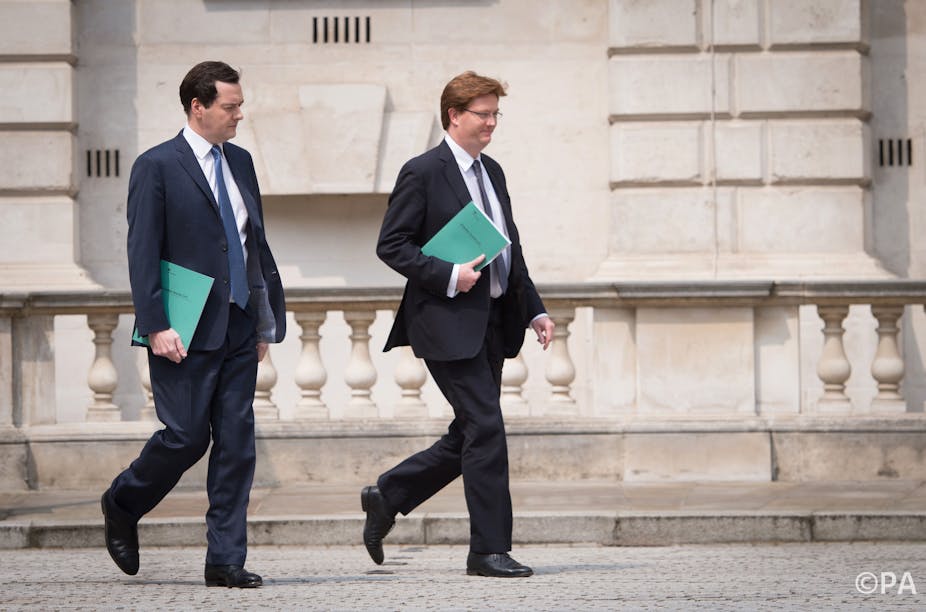In a dramatic flourish of energy policy announcements over the past two weeks, the government’s spending review was merely the first act.
Soon after, a British Geological Survey report revealed our huge shale gas reserves, the government committed to underwrite the construction of Hinkley Point C nuclear power station to the tune of £10 billion, and detailed proposals emerged for electricity market reforms designed to ensure sufficient electricity capacity to meet peak demand.
These are all significant developments in the policy landscape, but are all geared towards encouraging investment in “traditional” energy generation such as gas and nuclear. They are designed to deliver large amounts of power to plug a potential gap in our electricity capacity from 2015. This is a gap caused by a combination of the closure of some coal-fired and nuclear power stations, and a decade of under-investment. What remains to be seen is whether the government can encourage investment in renewable power.
The key announcement aimed at encouraging investment in renewable power generation is the level of subsidy available from 2014. These subsides will be in the form of Contracts for Difference (CfD) - a contract that guarantees a set price, known as the strike price, per kilowatt of electrical output. When actual prices in the market are below the strike price, generators’ revenue is topped up. If market prices rise above the strike price, then generators refund the difference.
Huge capital projects such as nuclear power stations are relatively unattractive to investors because of the amount of money required up-front, with no guarantee of a return. Some forms of renewables, such as offshore windfarms, are also expensive as the technology is new and commercial aspects have yet to mature. The system of CfDs is designed to provide that missing revenue certainty.
All low carbon technologies – nuclear, carbon capture and storage (CCS), and renewables – will be eligible for subsidy, though the strike prices for nuclear and CCS have yet to be published. But it’s already clear that in the world of low carbon power, some technologies are more equal than others, and the level of support offered differs significantly.
Renewables are likely to have contracts for 15 years, CCS for ten years, and nuclear power for up to 40 years. This reflects the time it takes to pay off the enormous capital costs of building nuclear power stations with the profits from generating and selling power. But the implication for which technologies are more attractive to investors is clear: a 40-year subsidy is a much more attractive proposition for investors than a shorter one. And a shorter contract of the length offered to renewable and CCS offered implies a higher strike price in order to ensure an attractive rate of return for investors.
However, support for renewables is limited by the Levy Control Framework (LCF), a limit designed to protect consumers from unconstrained price rises, capped at £7.6 billion in 2020. The higher the strike prices, the less capacity can be supported before the cap is reached. So while the market reforms are intended to deliver low carbon electricity, the conditions that come attached may actually scare off investment rather than encourage it. This could threaten the UK’s binding target of generating 15% of its energy from renewable sources by 2020.
Another announcement sneaked out after the spending review was the decision to allow electricity trading with other countries, to count towards its 2020 renewables target. This is despite the UK’s abundant renewable resources of wind and waves, and the conviction of the renewable power industry that it would be able to meet its targets - if conditions are right.
Many have suggested that the new market arrangements are really aimed at encouraging investment in nuclear power, rather than across the board investment in all low carbon technologies. This suspicion has been fuelled by the many other steps the government has taken to ease through new nuclear power stations - changing planning rules, streamlining reactor licensing decisions, and trying (and failing) to find a politically viable solution to nuclear waste.
Everything announced since the spending review seems to confirm this. The concrete measures are directed at conventional generation – nuclear power and gas - and reflect the government’s new excitement about shale gas and fracking. In contrast, new renewable technologies are very much in the second division, undermined by relatively unattractive contracts and a back-door that allows bought-in renewable electricity to meet 2020 targets.
Sadly then, it seems that the UK is preparing to tread the same boards, merely reciting its learned lines in the role of supporting renewable energy, instead of working on developing a new, more sustainable, and innovative approach.

